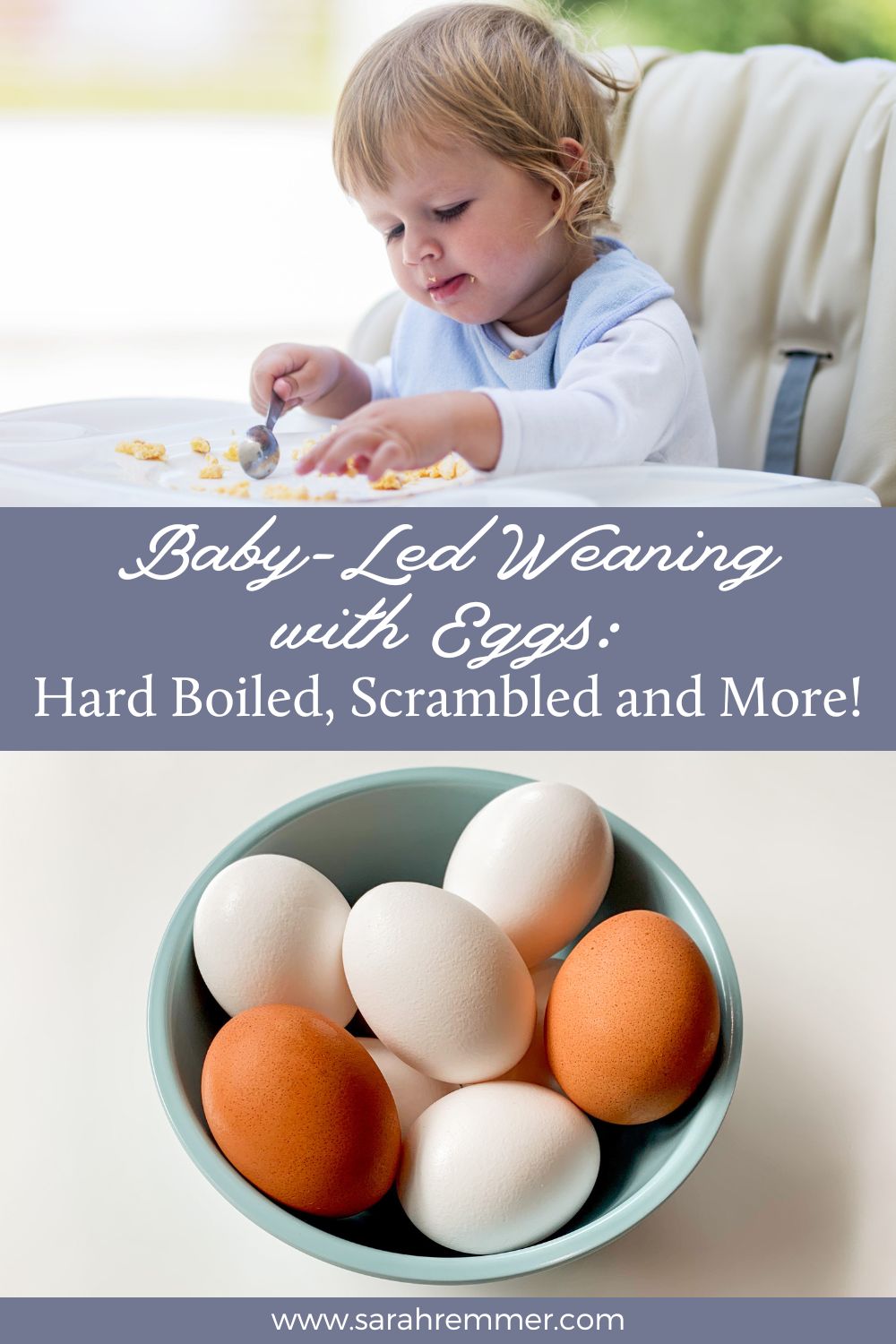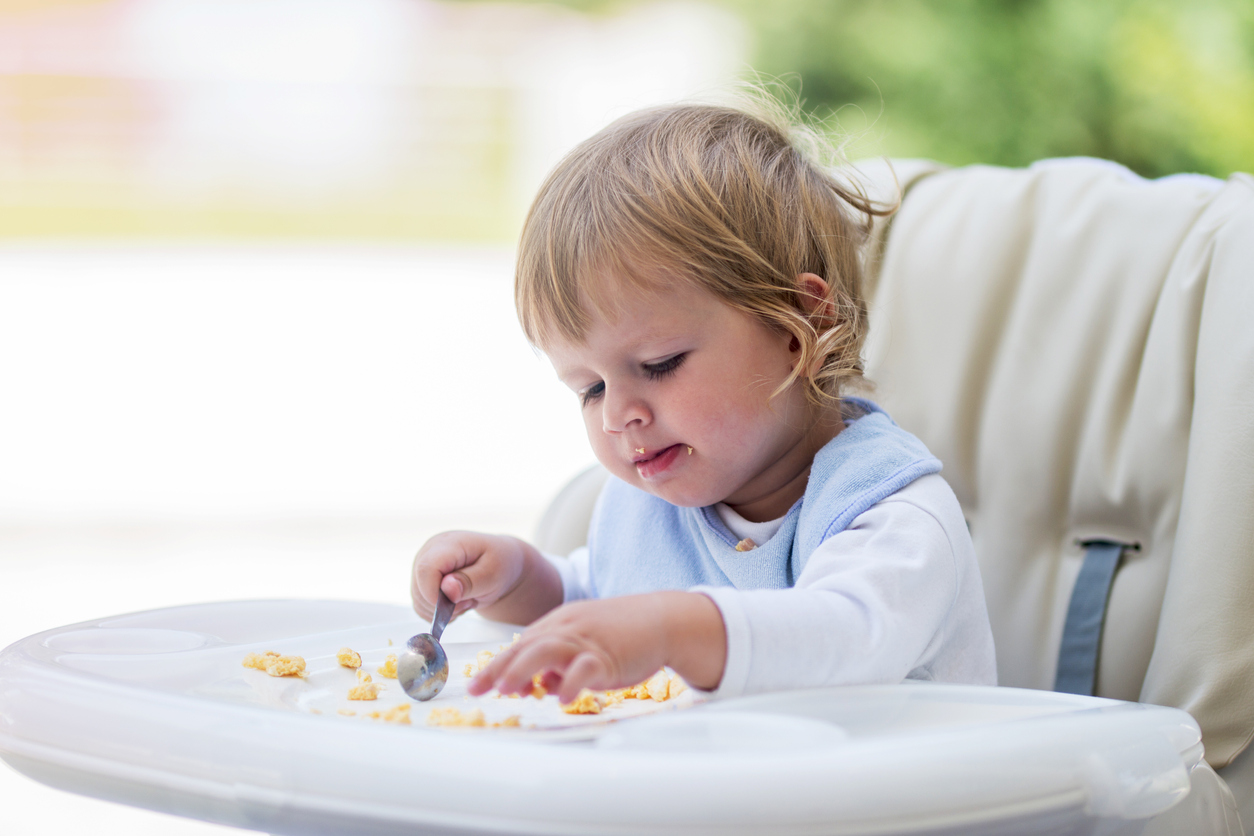
Baby-Led Weaning with Eggs: Hard Boiled, Scrambled and More!
Table of Contents
Here is everything you need to know about baby-led weaning with eggs, from a pediatric registered dietitian. Whether you’re doing baby-led weaning, spoon-feeding, or a combination, this post will walk you through, step-by-step, how to introduce eggs to your baby.
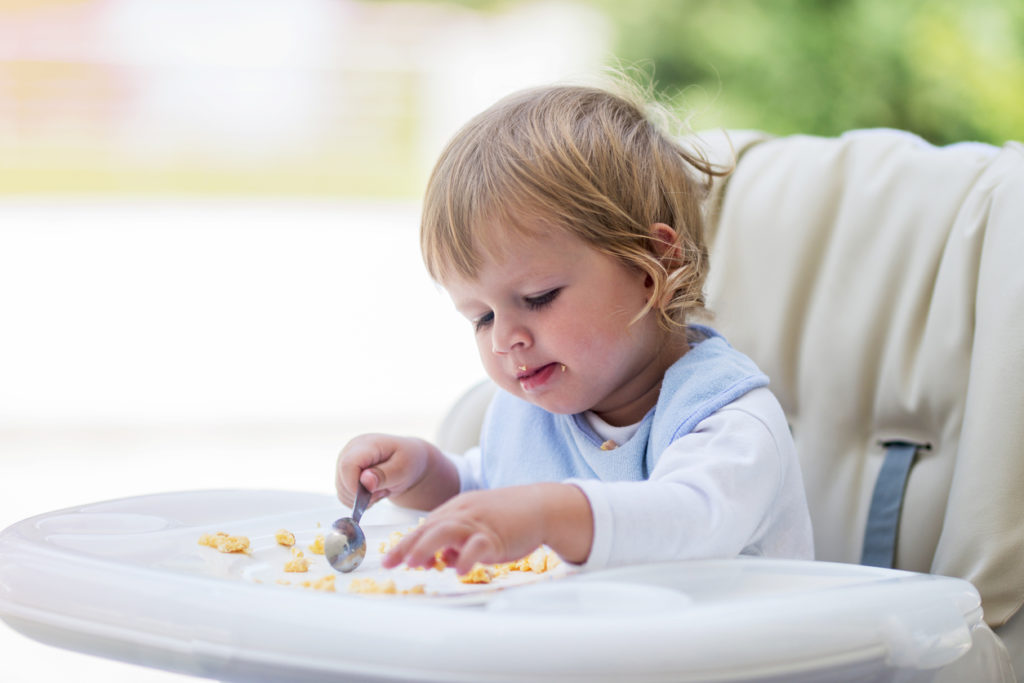
In this post, I’ll cover everything you need to know about introducing your baby to eggs:
Why eggs are an ideal baby-led weaning food
Eggs are little nutrition powerhouses, containing protein, vitamins, and minerals essential for your little one’s growth and development. These nutrients act as building blocks for your babies growing brain, muscles, internal organs and immune system! Needless to say, eggs are powerful in the nutrition department, but they are also super when it comes to cooking them or incorporating them into your family’s meals. From simple hard-boiled eggs to delicious colorful frittatas, eggs are a great addition in any meal or snack (including baby’s!)!
The texture of cooked egg is soft and moist, easy for baby to learn to chew and swallow. It is a perfect food to start with when allowing your baby lead to the way in their eating journey.
When to introduce eggs to baby
You can serve eggs to your baby as soon are they are showing all the signs of readiness to eat solids! For most babies this happens at around 6 months – this is right around the time that I recommend introducing solid foods. Check out this guide for important information on your baby’s readiness cues for baby-led weaning.
Baby loses their tongue thrust reflex
As mentioned above, eggs have the perfect soft, moist texture for eating newbies. Your baby is born with instinctual reflexes to guide their baby-led weaning journey. The gag reflex keeps larger pieces of hard boiled or scrambled egg from reaching the windpipe. It is normal and expected for baby to gag often (especially with new foods and textures) to prevent choking! This reflex is different than the tongue thrust reflex where baby will push their tongue out when any food touches their lips (no matter the texture!). If your little one has not lost their tongue extrusion reflex, it is a sign that they are not ready to start solids.
They start using the palmar grasp
The palmar grasp is another instinctual reflex that allows babies to grab longer stick like objects or strips of food. Finger-like strips of cooked egg or omelet are great to offer baby as soon as they are ready to start solids! At this age smaller/ medium sized pieces of hard-boiled or scrambled egg morsels are more difficult for baby to pick up and bring to their mouth. However, these are great options to offer your little one when they are starting to develop their fine-tuned pincer grasp when they are around 8-9 months old. Be sure that any egg you offer your baby is cooked well, with any hard or crispy edges removed. When eggs are cooked or pan-fried at a high temperature, they can get crisp, tough bits that are too difficult for your little one’s gums to break down.
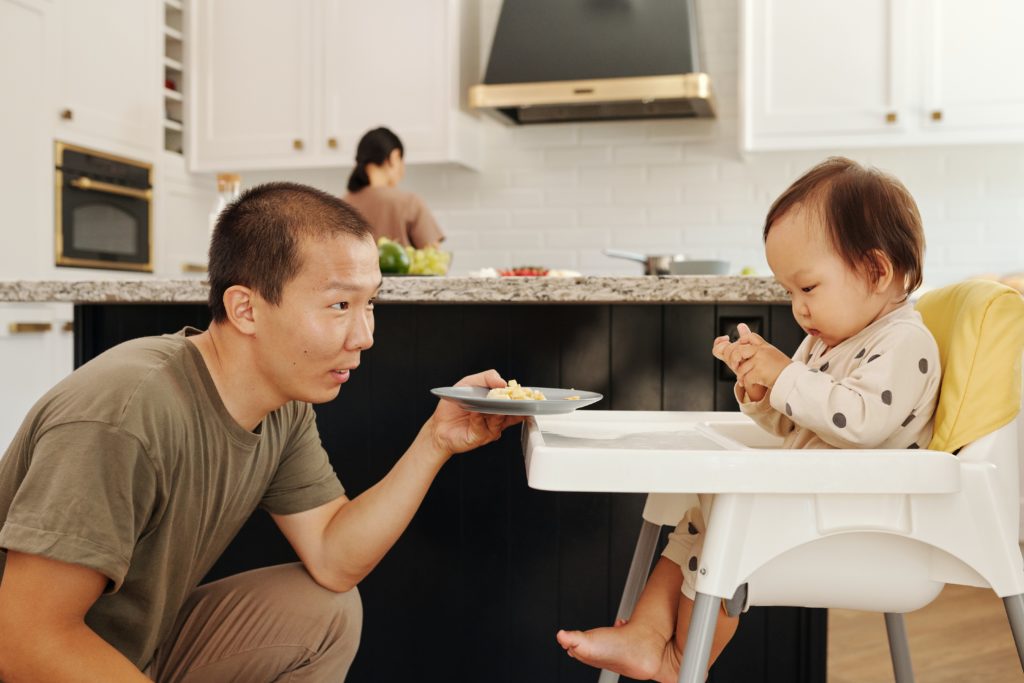
Introduce eggs early to baby if egg allergies run in the family
If egg allergies run in the family, it may be a good idea to consider introducing eggs as their priority first food! Early introduction of common food allergens (sometimes as early as 4 months) such as egg, have shown to reduce risk of developing food allergies later on. If your child is at high risk for a food allergy, or if you have any questions or concerns, be sure to ask a dietitian or pediatrician about introducing egg to your baby.
The benefits of eggs for baby
Eggs are jam-packed full of nutrients—they are basically a nutritional powerhouse for your growing little one! Not only are they a wonderful source of protein, eggs are a good source of vitamins A, D, iron, choline, vitamin B12 and riboflavin. I think we need to add into this section (I know it’s below too), about the safety of egg whites vs. yolks and how much you have to cook the egg (what texture) for food safety, as parent will want to know this right off the bat.
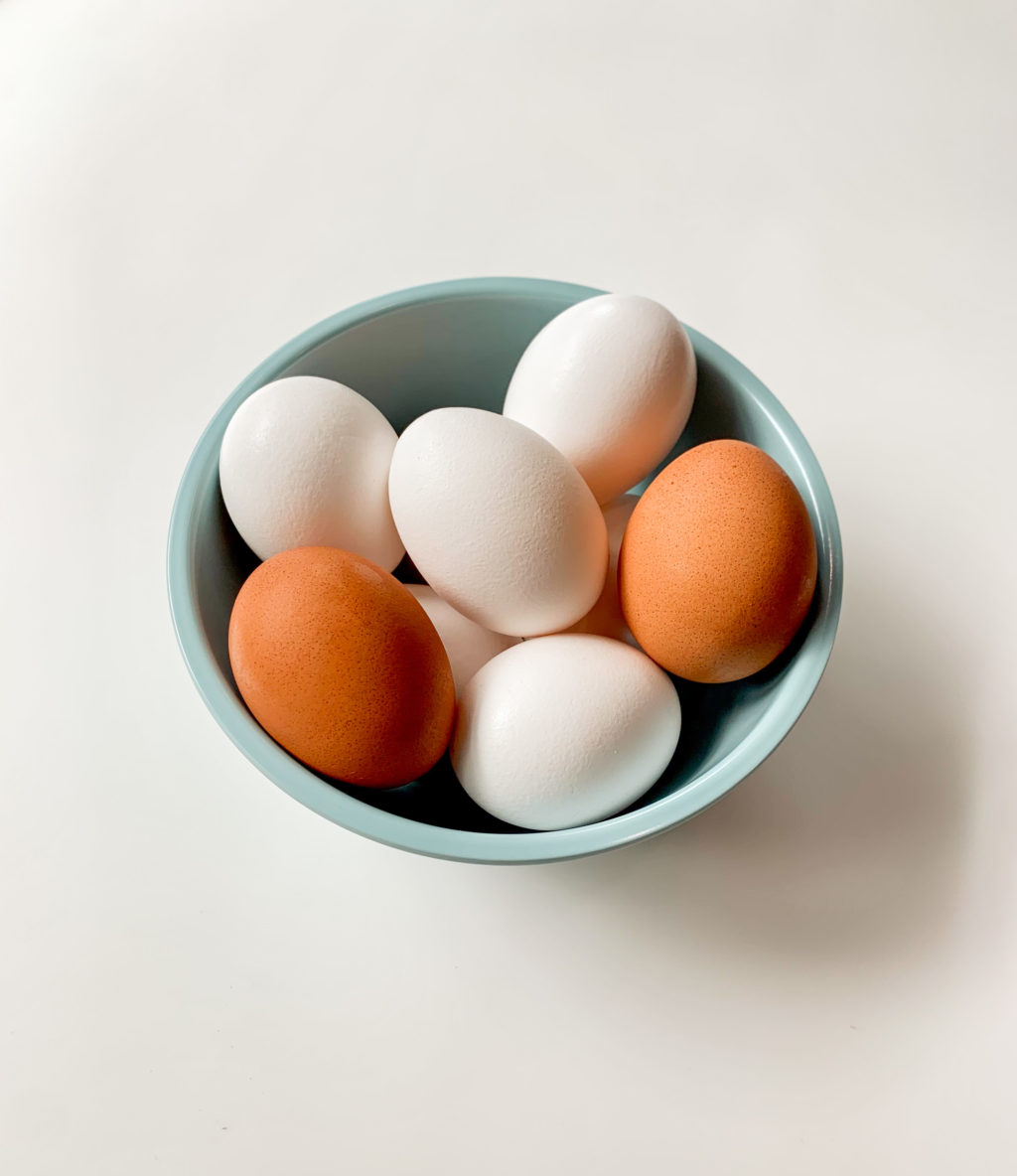
Just one hard-boiled egg provides1:
- 6% of baby’s daily vitamin D needs – essential for building healthy bones and strengthening baby’s immune system to fight off bacteria and viruses.
- 6% of baby’s daily iron needs – essential for healthy red blood cells, brain development and baby’s general physical growth.
- 19% of baby’s daily vitamin A needs – essential for normal vision, healthy immune function, and development of baby’s internal organs.
- 60% of baby’s daily riboflavin needs – a b vitamin essential for baby’s general growth and development as well as energy production.
- Almost 100% of baby’s daily choline needs – essential for normal cell growth, and baby’s brain function.
- Over 150% of baby’s daily vitamin B12 needs – essential for keeping baby’s nerve and blood cells healthy, as well as supporting normal energy production and metabolism.
How to serve eggs to baby
Mashed/ pureed (starting at 6 months)
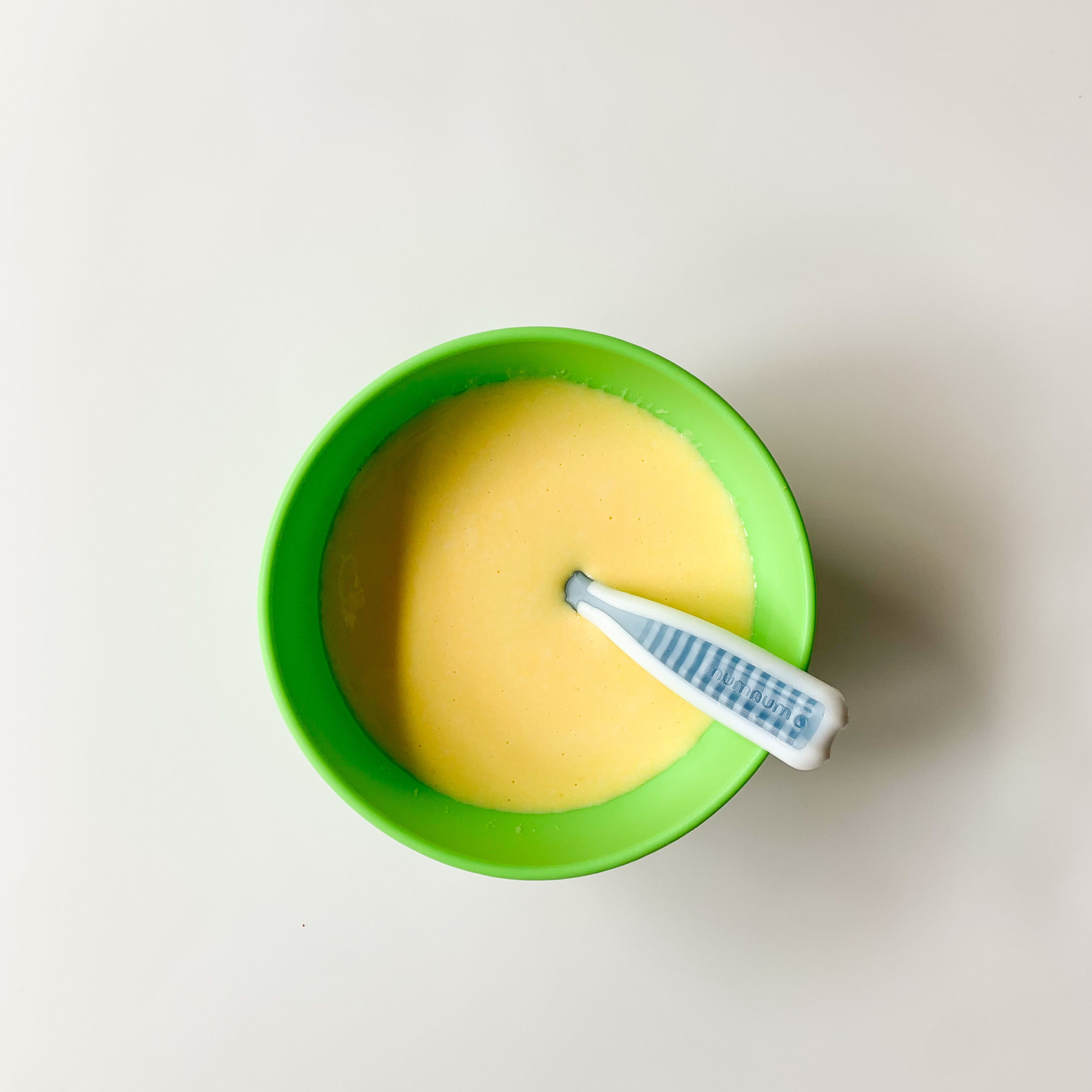
Take scrambled or hard-boiled eggs (see below how to prepare) and puree in a food processor or blender with a little water to create a smooth texture. To exposure your baby to a thicker, chunky texture simply mash hard-boiled eggs with a fork and serve to baby on a spoon or allow them to eat with their hands!
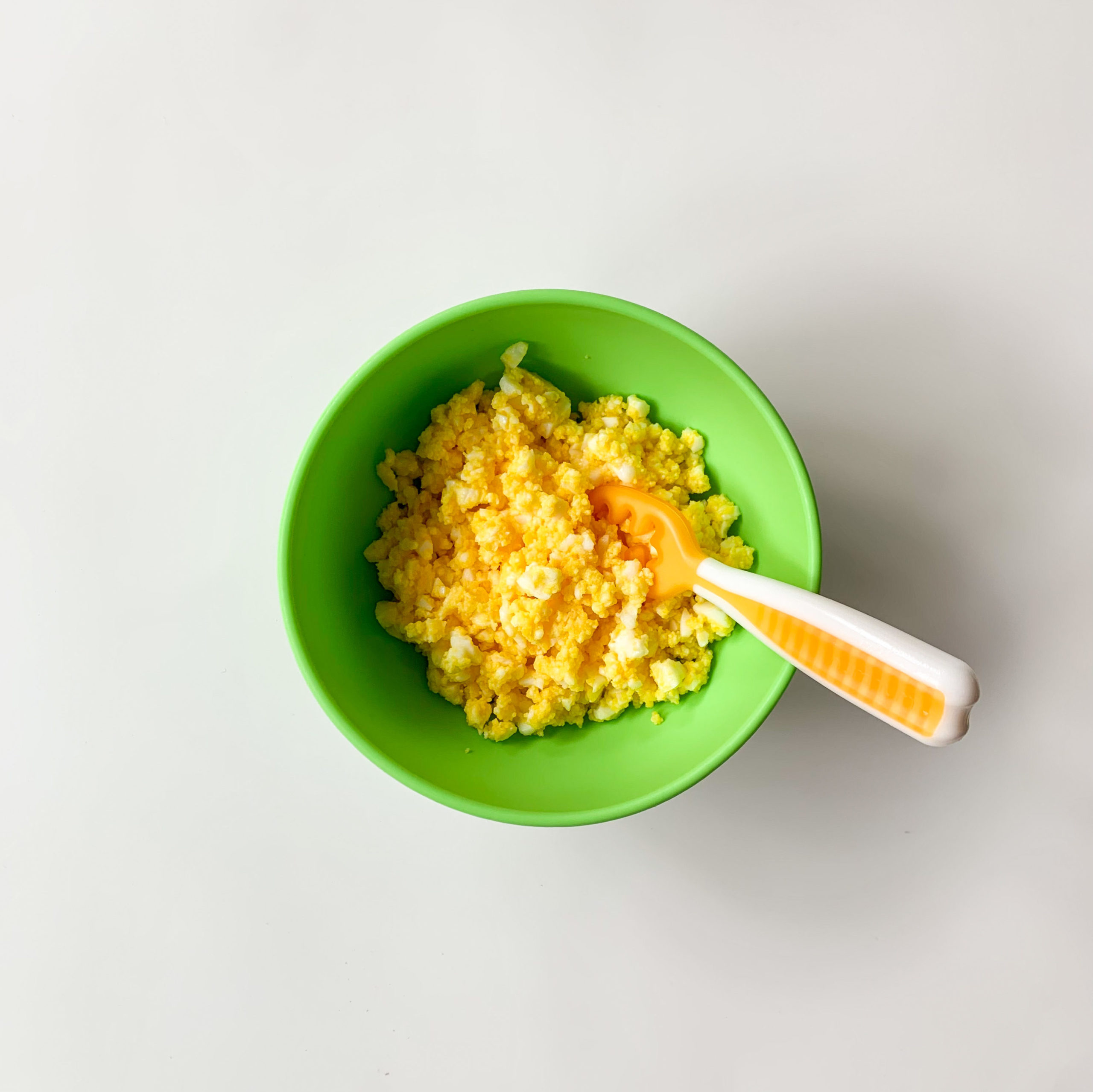
Omelet strips (starting at 6 months)
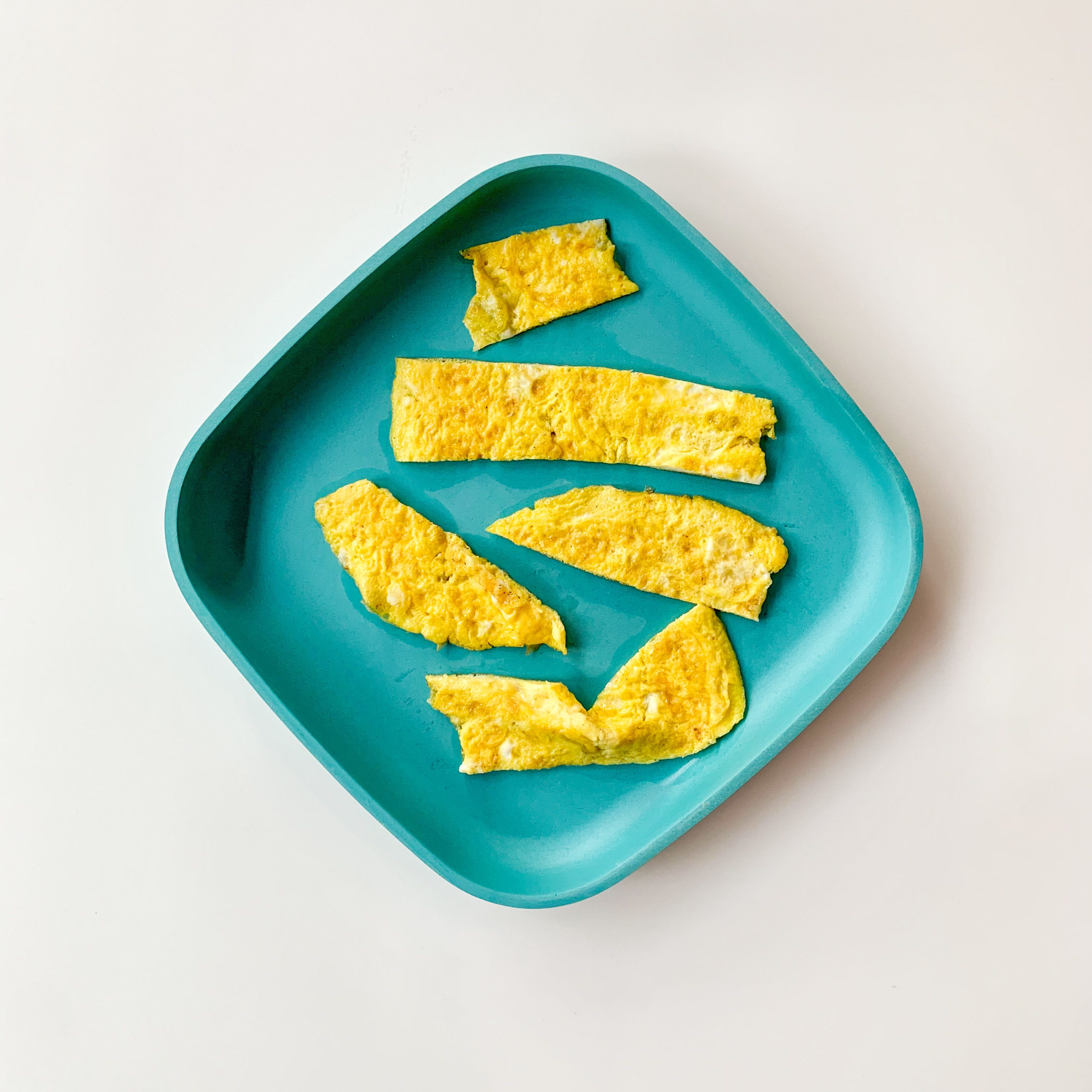
Cook the omelet in a non-stick pan (see below under pan-cooked eggs). Let it cool before cutting the omelet into finger like strips that are easy for your little one to grasp in their tiny fist and bring to their mouth. If your omelet has any rough crispy bits on the edges be sure to remove those before serving as this texture may pose a choking risk.
Egg and banana pancakes (starting at 6 months)
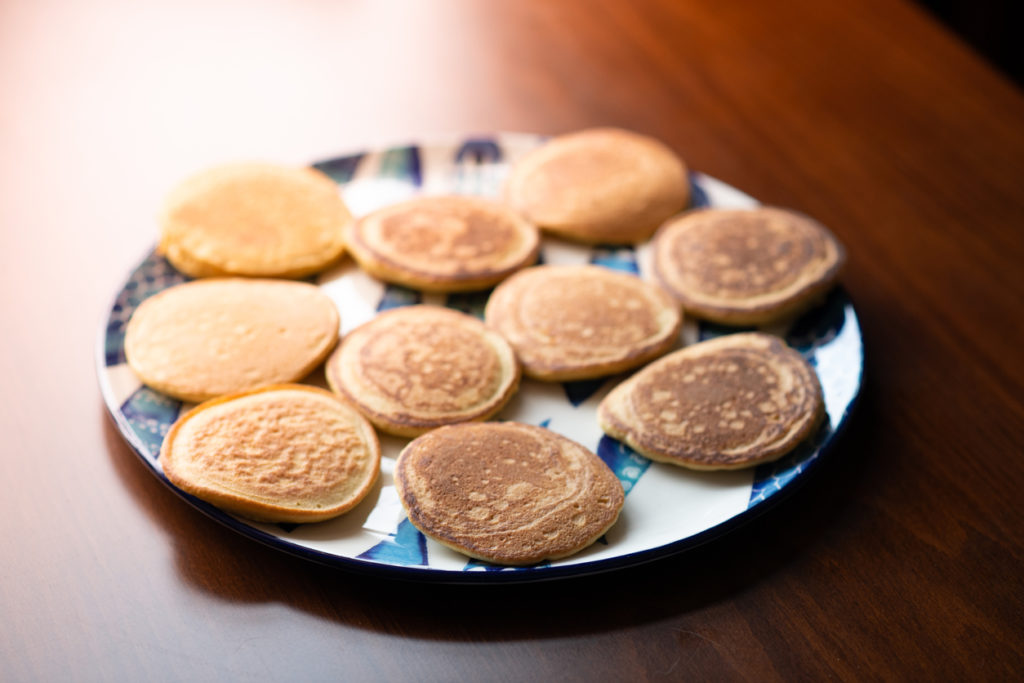
Whisk 2 eggs and mix together with 1 large mashed banana. The protein of the egg helps bind the banana together into a pancake when it is cooked! An option is to add flaxseed, chia seeds or baby oatmeal for extra fibre and nutrients. Ladle mixture onto a buttered or oiled non-stick pan on medium high heat. Flip when the pancake starts to turn slightly golden brown. Serve pancake in strips or smaller pieces.
Scrambled (starting at 8-9 months)
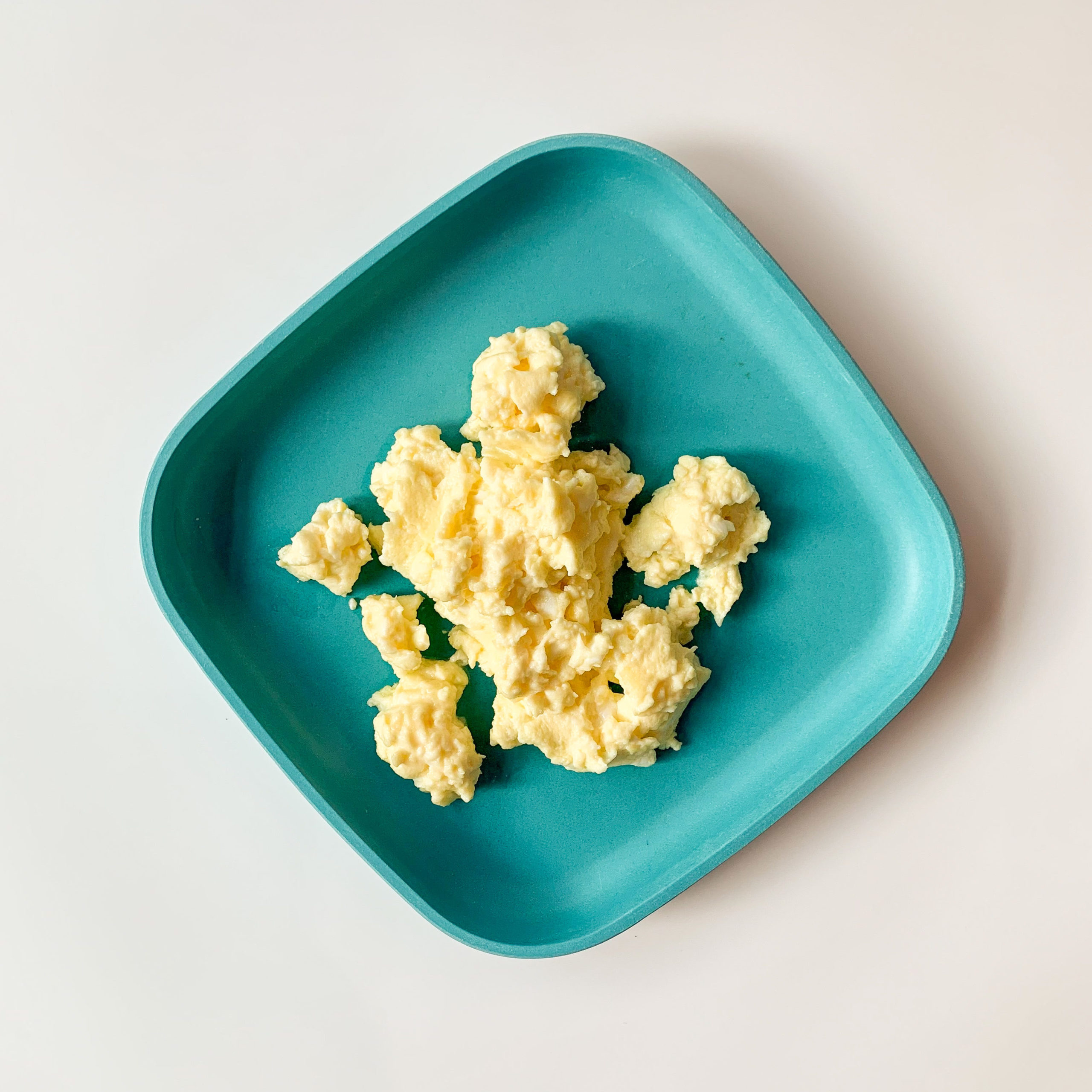
Prepare scrambled eggs in a non-stick pan (see below under pan-cooked eggs). Break scrambled egg up into smaller pieces of egg to encourage your baby to start using their pincer grasp when picking up the egg morsels.
Hard-boiled egg wedges and pieces (8-9 months)
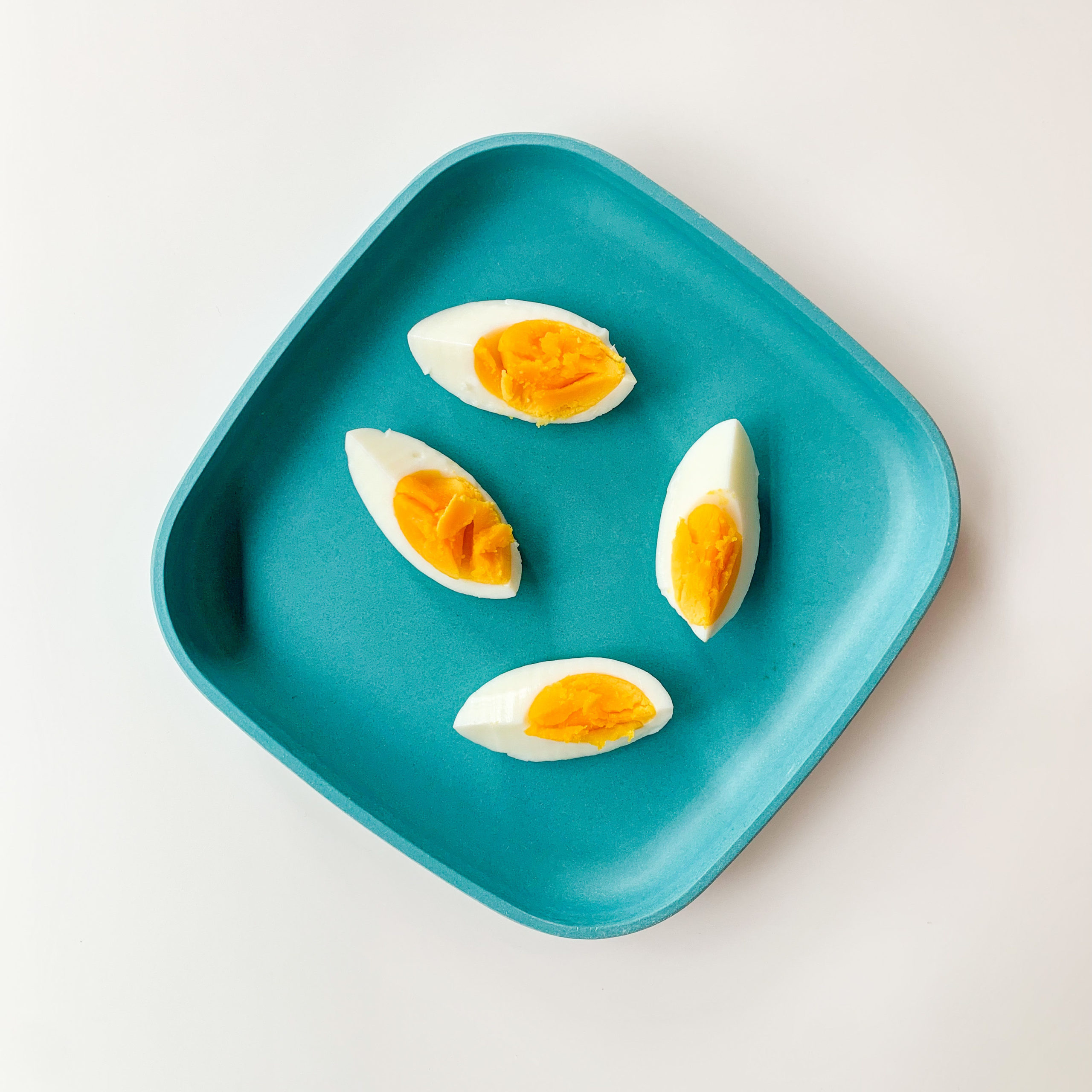
After your hard-boiled egg is cooled and peeled (see below on how to prepare), cut the hard-boiled egg in half lengthwise. Then cut each have lengthwise again to get 4 egg wedges. Serve to baby like this or chop the egg into smaller pieces to help encourage your baby’s pincer grasp development.
Egg-bite muffin cups (starting at 10-12 months)
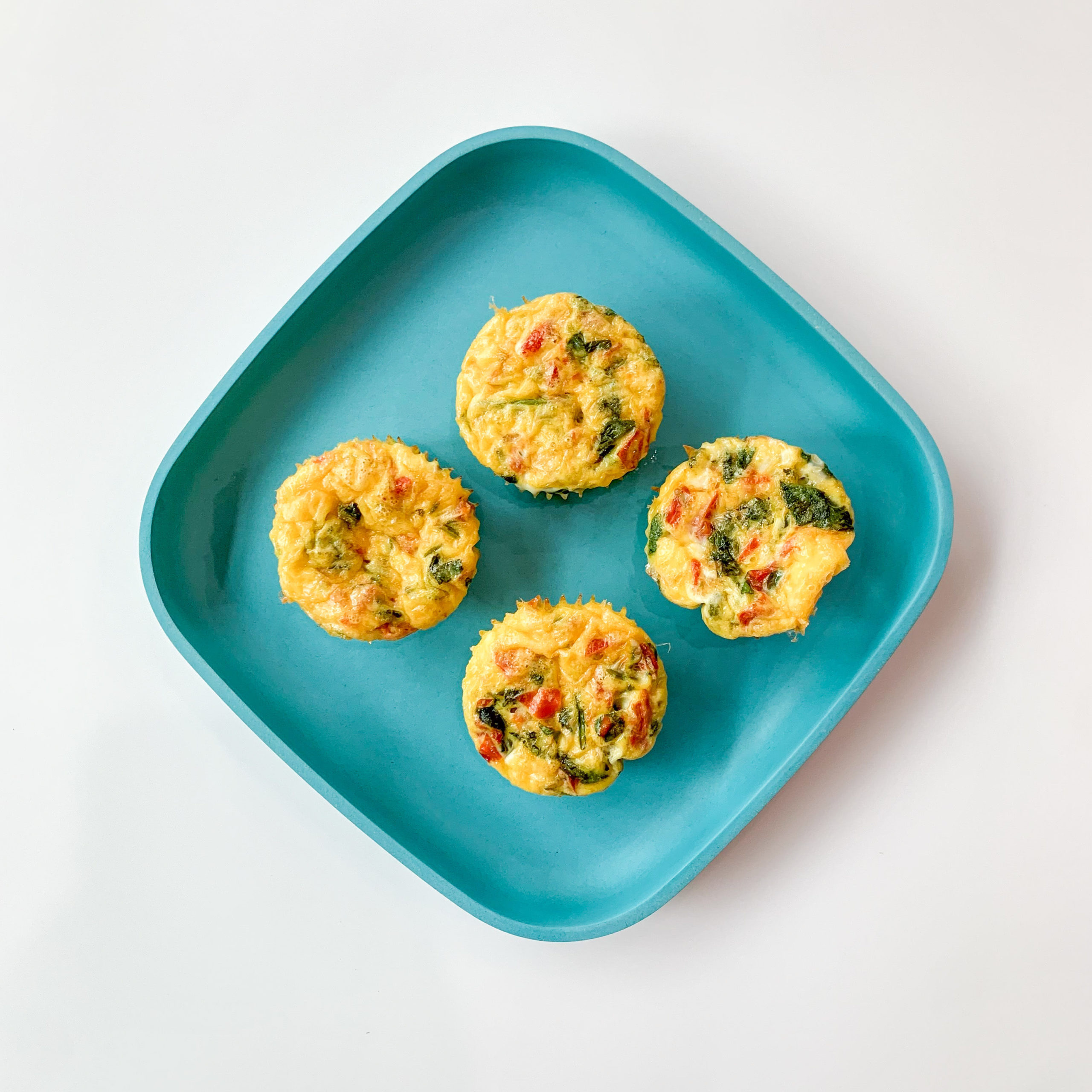
Babies are adventurous eaters. Exploring mixed textures and colors together in their food is all part of the fun of learning to eat! Eggs can be combined with sweet or savory toppings in a pre-greased muffin tin for a simple protein packed snack. Diced bell peppers or tomatoes, shredded cheese and chopped spinach are delicious together in these mini frittatas. For more of a sweet option add shredded coconut and fresh berries to the egg mix! (see below in baked eggs on how to prepare). If you made a simpler version of these, using egg, cheese and pureed or finely chopped cooked veg, this would be safe to serve starting at 6 months. But if there are coarse “chunks”, wait until 10-12 months.
Ways to cook eggs for baby
1. Hard-boiled eggs
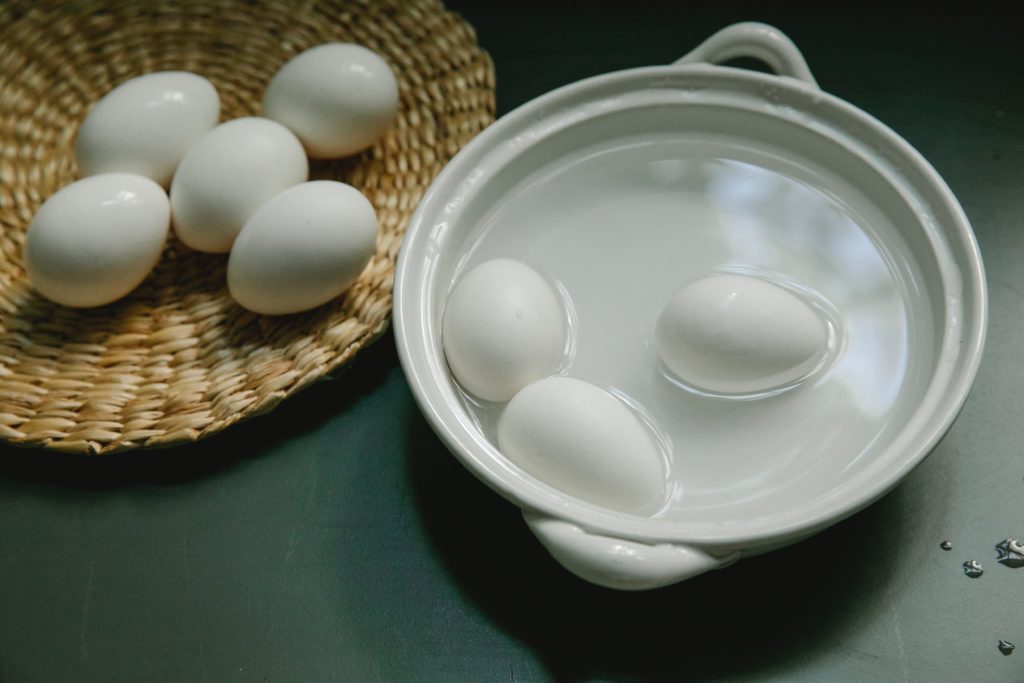
When boiling eggs in batches make sure the eggs are covered by at least 1-2 inches of water. Leave the pot uncovered and bring the water to a rolling boil. When the water is boiling turn the heat off and cover the pot with a lid. Let the pot sit for 10-15 minutes for hard-cooked eggs. If you are cooking more than 6 eggs in a pot leave the eggs in the hot water for closer to 15 minutes. Remove your eggs with a slotted spoon into a boil of ice water to allow the eggs to cool down. The cold-water bath helps to stop the cooking and makes the egg easier to peel. Store unpeeled hard-boiled eggs in a covered container in the fridge. Use the eggs within 5 days. Making batches of hard-boiled eggs is a great way to have quick protein on hand for the whole family throughout the week!
2. Pan-cooked eggs
Scrambled
Whisk 2 eggs in a small bowl with a fork. Option to add in 1 tbsp of milk or water—this makes the eggs a bit softer and fluffier when cooked. Pour eggs in a non-stick pan on medium heat with a bit of oil or melted butter to avoid sticking. When eggs start to solidify and cook on the bottom, gently move the cooked parts around with a spatula to make way for the uncooked egg. When continue to move the eggs around the pan until they are thoroughly cooked and fluffy. Allow the eggs to cool before serving to your kiddo.
Omelets
Prepare plain omelets the same way as scrambled eggs, but instead of mixing the eggs around the pan to cook them, wait until the egg is solid enough on the bottom to flip like a pancake. Cook the other side of the egg omelet, then let cool. Serve in strips starting at 6 months or smaller pieces when your baby is closer to 8-9 months to encourage their pincer grasp skills. If you are cooking one or two eggs it is best to use a smaller non-stick pan so the egg spreads evenly across the bottom.
Over-Easy
Crack an egg directly onto an oiled or buttered non-stick pan over medium heat. It will take about 2-3 minutes before the egg white is cooked and solid enough to flip. Flip egg over and cook again for about 2 minutes. Gently press on the yolk to ensure that it is fully cooked through. Serve this egg with any crispy bits on the outside removed. You can give the full egg to your little one, or cut into smaller pieces or strips.
3. Microwaved eggs
Scrambled microwaved eggs2
Grease of microwave safe bowl or mug with cooking spray. Whisk together 2 eggs and 1 tbsp. of milk. Cover the bowl partially with plastic wrap leaving a small section for steam to vent through. Microwave on medium-high (70% power) for 1.5-2 minutes. Pause the microwave a few times to stir the eggs around to allow for even cooking. When eggs are fluffy but still moist, remove from the microwave and allow them to sit for at least a minute or until fully cooled before serving to your little one.
Poached3
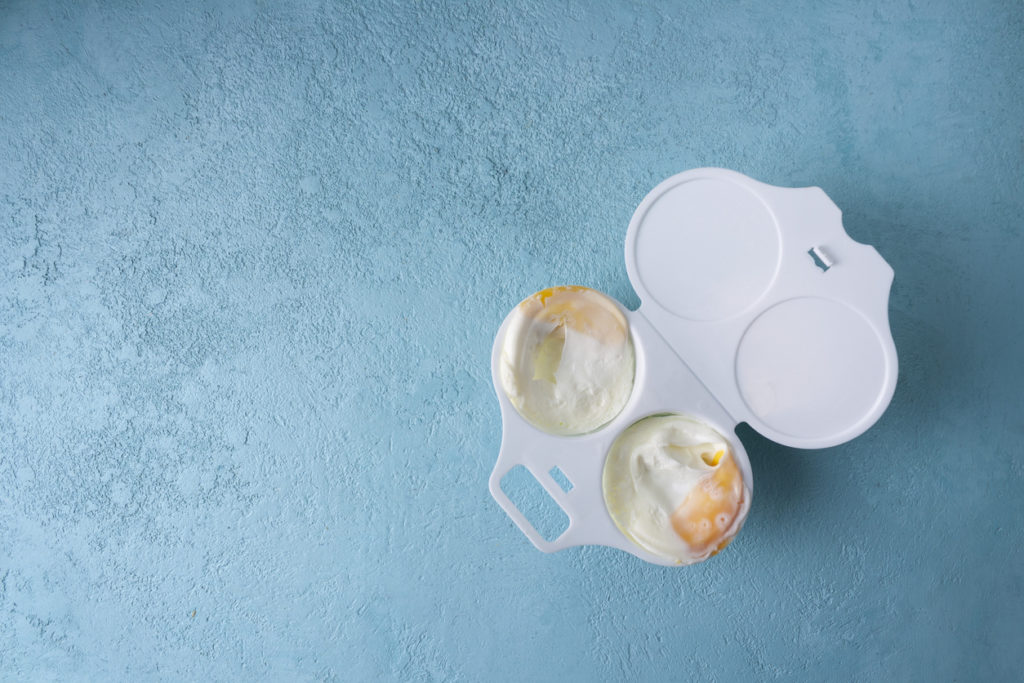
Spray a microwave safe mug with cooking spray. Crack egg into mug and pierce the egg white and yolk a few times with a fork to help prevent the egg from “exploding” in the microwave. Cover with plastic wrap, partially uncovered to allow for the steam to vent. Cook on high (100% power) for 40 seconds to fully cook the egg white and egg yolk. If the egg is not fully cooked, flip it and microwave again for 10 more seconds or until fully cooked. Wait until the egg is fully cooled before serving to baby in strips or small pieces to encourage pincer grasp.
4. Baked eggs
Egg bite muffin cups
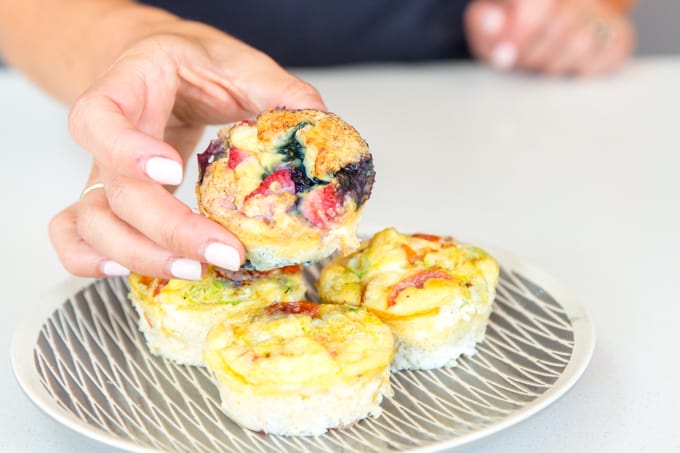
Basically mini frittatas, these little egg bites made in a muffin tin are a great make ahead breakfast or snack option for baby and the whole family! There are so many different flavor combinations possible in a mini baked egg bite. A great place to start is adding 1-2 new ingredients to the eggs (like shredded cheese and tomatoes) and so that your little one is exposed to new flavors and textures without overwhelming them. Over time try adding in 2-4 different toppings (for example shredded cheese, tomatoes, garlic and spinach!) to add variety to their egg bite adventure! Here is a super simple recipe outlining how to prepare eggs in muffin tins: Easy Egg Bites Two Ways
Frittata
In a large bowl mix together 6 eggs, and ½ cup of whole milk. Heat oil or butter in an oven safe pan or cast-iron skillet. Add 1 ½ cups of diced vegetables (ex. Tomatoes, zucchini, bell pepper, or whatever your family likes). After veggies are cooked and soft, option to wilt in a large handful of chopped spinach for extra nutrients and color! Add the egg mixture into the pan and ½ cup of shredded cheese of your choice. Stir everything together and bake in the oven for about 15 minutes or until the egg in the middle no longer jiggles and is fully cooked through. Wait for eggs to cool and cut into slices or pieces that are easy for baby to grasp. Serve with banana and toast “fingers” or strips to complete the meal!
Five ways to use hard boiled eggs for baby-led weaning
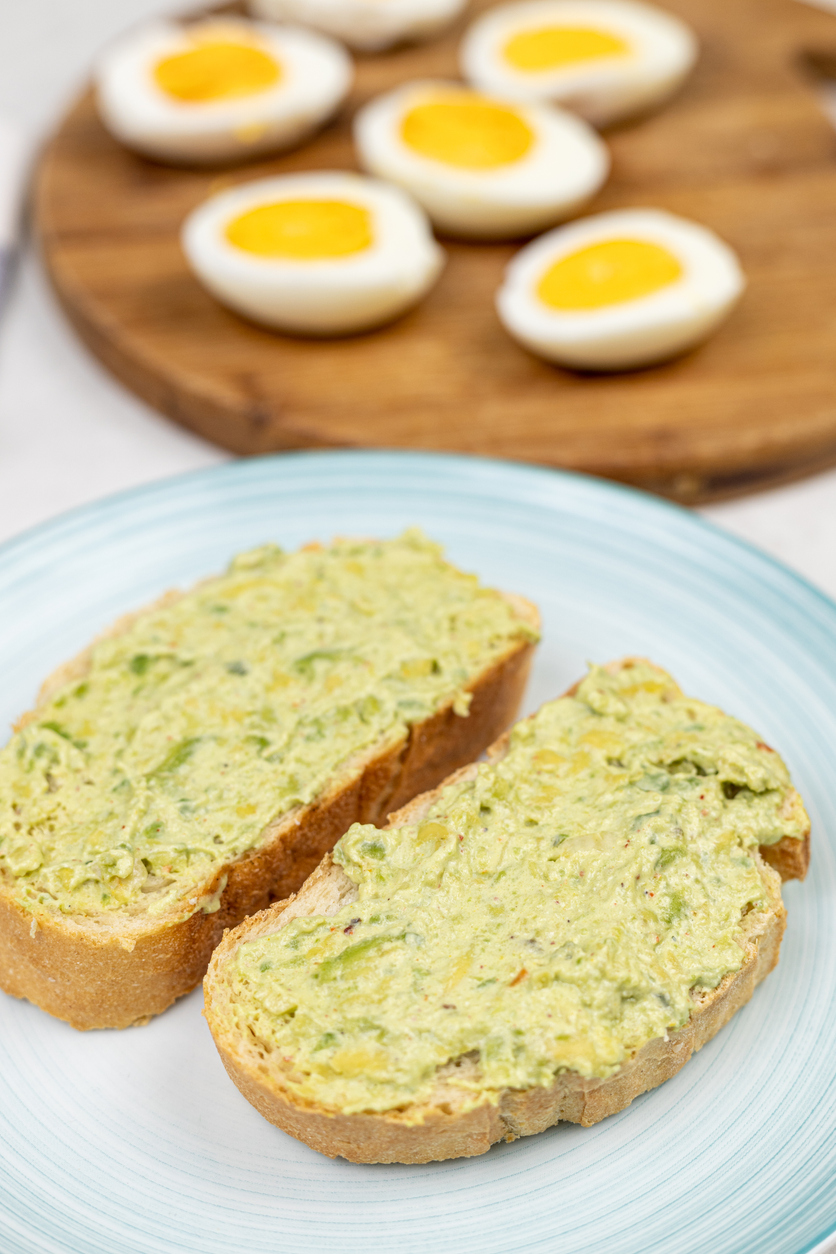
Hard-boiled eggs are one of the easiest ways to batch cook eggs ahead of time for use throughout the week. It takes less than 15 mins and each cooked egg is neatly contained in its own natural shell for easy mess free storage! Here are some quick and easy options of how to use hard-boiled eggs for baby-led weaning:
- Hard-boiled egg yolk mashed with whole yogurt- serve to baby on a pre-loaded spoon
- Hard- boiled egg mashed with avocado on toast- serve to baby spread on toast, cut into strips
- Hard-boiled egg mashed into baby oatmeal- spoon feed to baby or let baby self-serve with a baby spoon like NumNum Pre-Spoon GOOtensils which are great for new self-feeders
- Hard-boiled egg blended with sweet potato or butternut squash- this will make a smoother puree especially if a little water or milk is added to thin out the consistency.
- Hard-boiled egg mashed with cooked quinoa and veggie or fruit puree (peas/carrots/broccoli/ banana/mango etc.)- mashed hard-boiled egg is a chunkier texture, especially when mixed with quinoa and veggie puree. A well-balanced meal option that your little one can easily scoop up with their fingers! Getting messy is an important part of learning about food and accepting different food textures as your kiddo grows!
How to store eggs
Unpeeled hard-boiled eggs can be stored in the refrigerator for up to 5 days. Do not freeze hard boiled eggs as they will become tough and rubbery. Dishes or baby food prepared with cooked eggs can be stored for up to 2 days in the refrigerator. Make sure to heat egg dishes from the fridge thoroughly to “steaming hot”, then let cool before serving to your little one.
Frequently Asked Questions about baby-led weaning with eggs
In Canada, less than 2% of kids between the ages of 0-17 have an egg allergy. Less than 1% of adults over the age of 18 years have an egg allergy. The majority of babies diagnosed with an egg allergy will outgrow their allergy within a few years.
Allergic reactions to eggs can show up within minutes to a few days later. Symptoms vary from mild to severe. If your baby has a severe allergy, their symptoms will most often show with within minutes of consuming eggs.
Below is a list of signs and symptoms to watch for:
– Swelling, hives or rash around the face, mouth, lips and tongue.
– Itchiness, hives, redness, rash or eczema. Any changes in skin color.
– Congestion, runny nose, or itchy watery eyes
– Nausea, vomiting, or diarrhea
– Wheezing, breathing difficulty, or coughing, gagging and swallowing difficulty
– In extreme cases, loss of consciousness
The first few times you introduce eggs to your baby it is a good idea to introduce them on their own without any other common food allergens, especially if your baby is at high risk for an allergy. This way if your little one does experience an allergic reaction; you will be able to pin point egg as being the cause. Be sure to read The Truth About Introducing Food Allergens to Your Baby for more information.
Yes, it is recommended that you introduce both egg yolk and egg whites to your baby. Both components of the egg contain valuable nutrition for your little one’s growth and development. Some of the simplest ways of offering whole eggs is hard-boiled egg wedges, scrambled egg chunks or plain omelet strips!
Since the texture of cooked eggs are soft and moist, they are not considered a typical choking hazard. At times pan frying your egg can create crispy edges on the outside which can be hard for eating newbies to break down with their gums. Be sure to cut off crispy edges of fried eggs or omelets before offering to your newly weaned baby.
Ensure that the eggs you offer your little one is fully cooked so that the egg yolk is firm, not runny, and the egg white is opaque and not jelly-like. Babies are particularly vulnerable to food borne illness as their tiny intestines and immune systems are still strengthening and developing.
What type of eggs are best for my baby?
Rest assured that no matter what type of egg you buy in Canada, you are buying fresh, high quality, nutritious eggs. All Canadian egg farmers follow the Egg Quality Assurance™ Certification program, a quality standard system that applies to all made-in-Canada eggs!4
Conventional brown or white eggs
These are the most common type of eggs in Canada, which come from hens that are housed in small group settings with access to plenty of high quality, fresh food and water.
Omega 3 eggs
Hens are fed a nutrient enriched diet that contains flaxseed and a bit of fish oil, producing omega 3 enriched eggs.
Free Run
Eggs that are produced by hens that have access to run around the entire barn floor.
Free Range
Eggs that are produced by hens that can run around the entire barn floor and have access to the outdoors when weather permits.
Organic eggs
Eggs that are produced by hens are raised in a free-range system and are also fed certified organic feed.
Read this blog on How to Choose the Best Type of Egg for Your Family for a more in depth explanation on the different types of eggs and egg products available to Canadian families.
Delicious baby-led weaning egg recipes
References:
- The Canadian Nutrient File- Food Search- Hard-cooked egg
- Basic Microwave Scrambled Eggs Recipe | Get Cracking
- Basic Microwaved Eggs | Get Cracking
- The choice is yours! A guide to buying eggs | eggfarmers.ca
